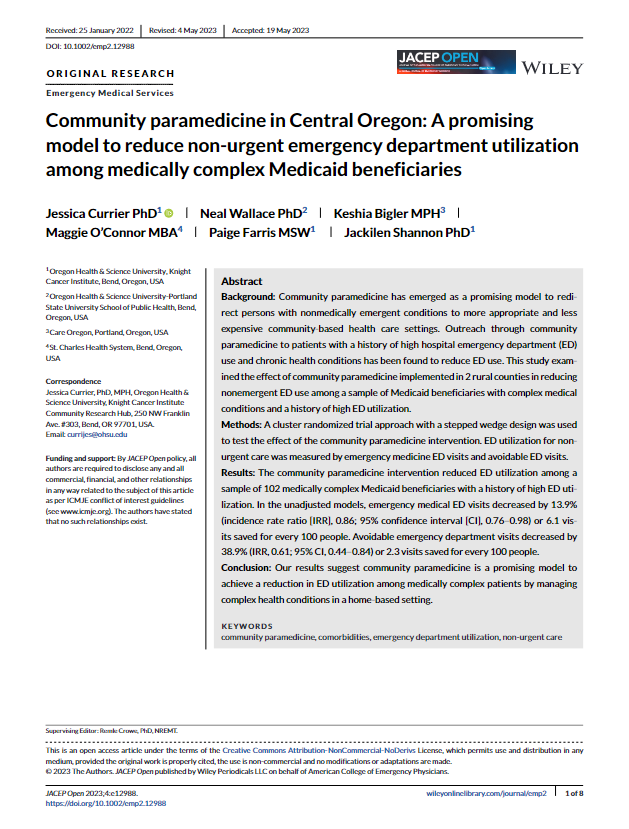Headline
Randomized controlled trial measuring the impact of a community paramedicine model implemented in two rural counties shows reduction in emergency department visits.
Context
There is a growing body of research demonstrating the effectiveness of community paramedicine (CP) models in reducing avoidable emergency department (ED) utilization. CP models typically involve the deployment of paramedics and emergency medical technicians to provide a more expansive range of home-based services such as, hospital follow-up care, primary care services, medication reconciliation, and health education. This randomized controlled trial assessed the impact of a CP program implemented in two rural Oregon counties on ED visits among Medicaid patients with complex needs and high ED utilization.
Findings
The authors found that implementing the CP model led to a decrease in both urgent ED visits (14%) and in ED visits identified as avoidable (40%). This impact was present even when controlling for changes in patient age, comorbidity, and health status over the 20-month study period.
Takeaways
This study adds to the evidence base demonstrating the efficacy of CP models in reducing ED utilization. These findings hold significant implications for policymakers and health care organizations seeking to lower overall health care spending, preserve ED resources, and promote greater continuity of care and better connections between primary care physicians and patients. The authors also emphasized the need for new reimbursement mechanisms to facilitate the broader adoption of CP models.

